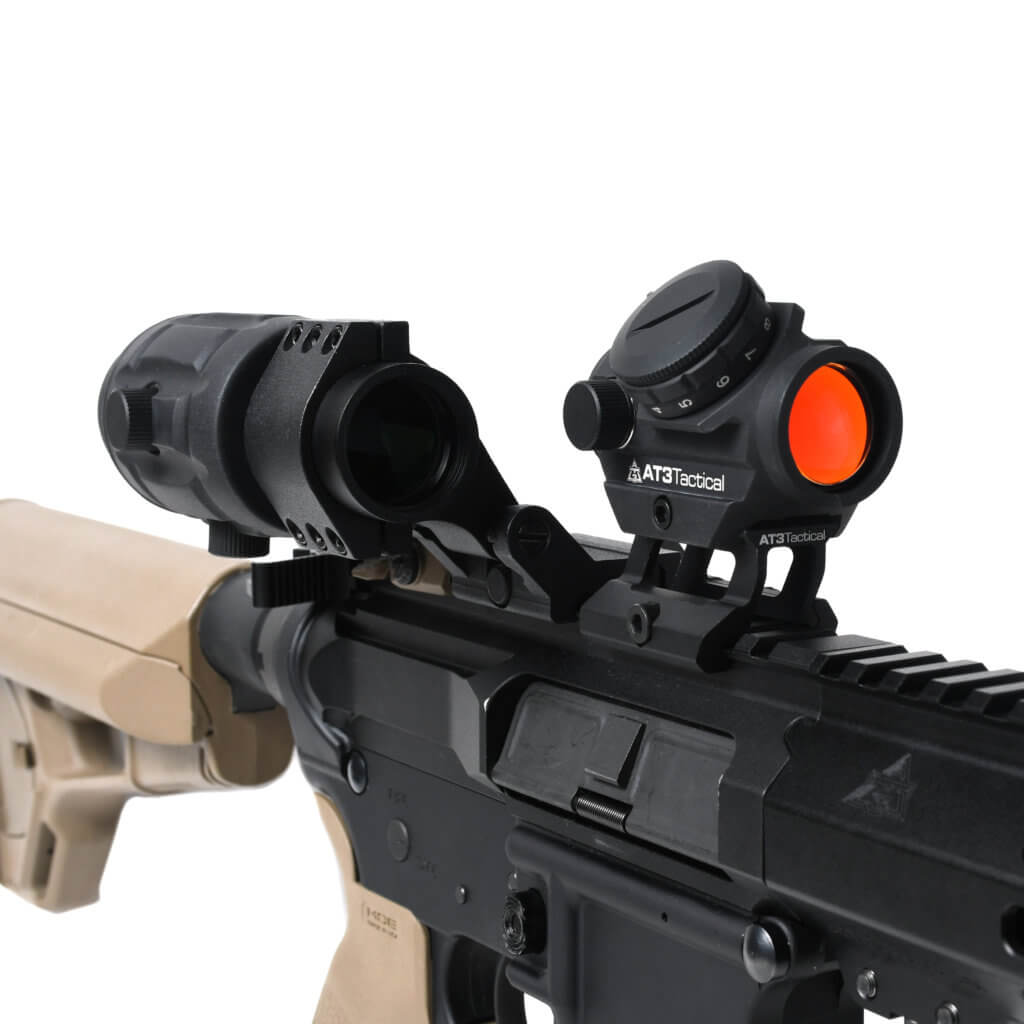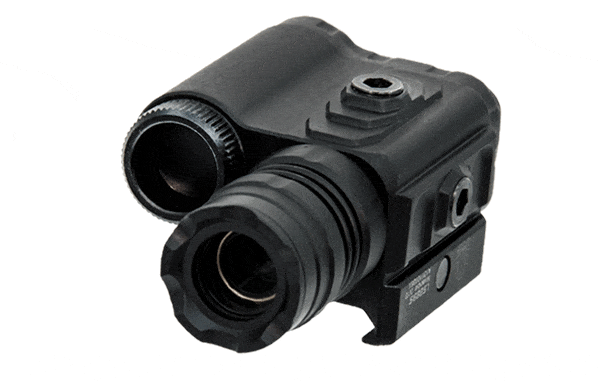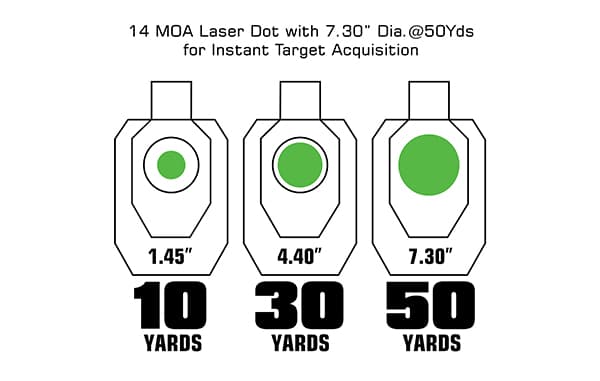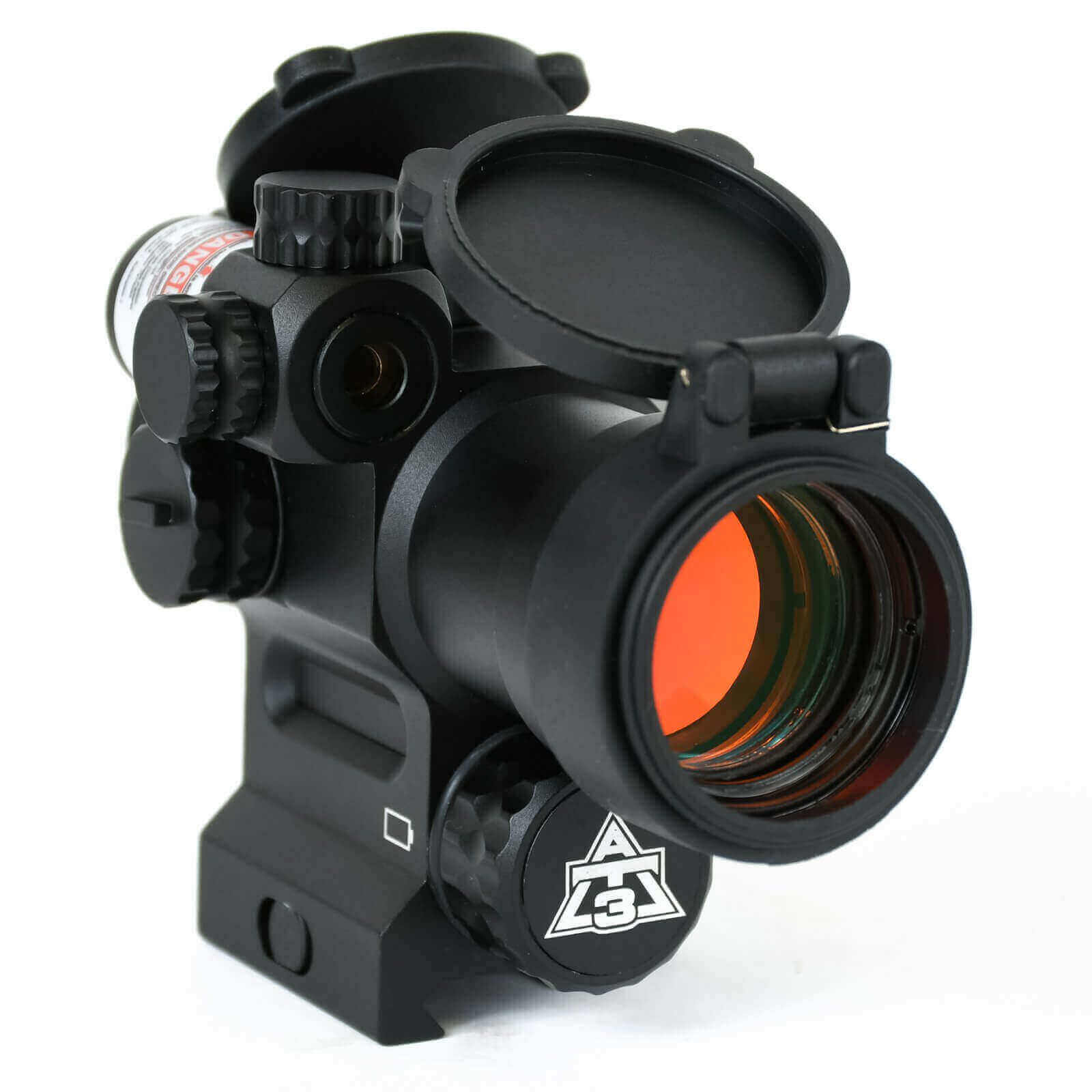Author: Billy M.
A smash of glass. A crash in the night. It’s happened. Your home has been invaded.
There’s little that’s scarier than the possibility of a fast and furious, close-quarters self-defense scenario, especially one where your home and family might be on the line. One of the best tools to have by your side in such a scenario is a trusty AR-15. But, as the US military knows, indoor fighting can be one of the most fast-paced, stressful, unforgiving, and high-stakes forms of combat. Your own home and/or family in the mix makes it even more complicated.
Fortunately, the AR platform is endlessly flexible, adaptable, and customizable. In this article, we’ll consider the tactics of close-quarters fighting and how to modify or build the perfect AR setup for this situation, before it happens to you, so you will have the edge when it matters most.
Home Defense: Why the AR-15?
In general, even a small centerfire rifle cartridge, like 5.56, will pack a lot more raw power than a pistol round. The moderate kick and buttstock/brace of the typical AR make managing recoil, controlling your fire, and keeping up an accurate stream of fire far easier than a typical handgun or shotgun. The AR platform is quite light and ergonomic for a long gun, and pistol or SBR variants are common. Very affordable (yet high-quality) variants of the gun are everywhere. The platform is proven, and, in its modern iteration, quite reliable. It is also endlessly customizable and can be refitted for practically any role.
Challenges of Indoor Fighting and Home Defense
To understand how to set up or build an AR for home defense, let’s consider, what are the challenges associated with indoor fighting? To start very simple, it means dealing with very short ranges and close surroundings. That means the bad guy should be easy to target and hit, right? Well, yes and no. You may be closer to him, but he’s closer to you, too. That means, whatever means of attack he has, you’re more vulnerable to them as well. (If these include a gun, that makes it a lot more complicated!) At close quarters, speed—being able to reliably get your sights on target before he can react or counterattack—is everything. Anything that speeds this up for you, or slows him down, if only by a split second, could grant the winning advantage. Unfortunately, there’s a long list of factors that can make this a lot harder:
- Walls and furniture block line of sight, so it’s easy to get caught by surprise.
- Point 1 gets even more complicated in the common scenario of a self-defense situation after dark, when it’s harder to see (let alone aim) anyway.
- Objects like walls, thresholds, and drapes can hinder your mobility and snag your rifle, undermining that all-important fast response even more.
- Collateral damage—if you’re forced to fire, any cartridge powerful enough to stop a human can pass through several walls (overpenetration) if you miss. This is your home, and you definitely don’t want to answer for hurting your own family member you didn’t see in the other room, or your neighbors, or their property. This becomes an even bigger issue if you live in an apartment. Which brings us to…
- Legality issues—Understand your local self-defense laws, and what they allow and don’t allow you to do, and under what circumstances. Operate with that in mind. The last thing you want is a reckless decision under stress that leads to long-term consequences. Sometimes even a legal shot can lead to plenty of trouble defending yourself in court. Even the best gear requires skillful handling and responsible presence of mind in the moment. Needless to say, nothing in this article should be considered legal advice or legally liable!
Shooting effectiveness, supported by good gear, actually decreases the last two problems. Desperate, uncontrolled, panicked shooting (the kind you regret later) is often a symptom of a failure to take control of the situation and win before it gets so out of hand. If you can get your sights on target first and maintain the initiative, the bad guy has (at best) no choice but to flee, give up, or face the consequences. For you, a position of secure strength and control of the situation is far more conducive to good shots and responsible, reasoned decisions. If you can’t maintain good aim and awareness of your surroundings, even in the dark, then the chances of collateral damage or a tragic decision are that much higher.
All that said, let’s consider how to build, mod, or shop for the best AR for such sticky circumstances. We’ll start with the first basic question of any AR-15 purchase or build—caliber.
Best Caliber for a Home Defense Rifle
This may be one of the most debated gun questions on the internet, but I’ll do my best to make it simple(ish). The two of the most common AR-15 calibers out there are 5.56 NATO and .300 Blackout. Either can work for home defense, but there are important differences. I’m going to make some quick-and-dirty generalizations here, but the truth is both these calibers come in many variations than can shake up a lot of this calculus.
As any soldier or cop with close-quarters combat (CQC) experience can tell you, one shot, even from a powerful cartridge, may not immediately stop a bad guy from attacking you. This is close quarters, remember, and that matters a lot. You need a load with stopping power. “Stopping power” is a notoriously controversial, hard-to-define (or measure) concept, but most would agree that .300 Blackout, with its much larger bullet, beats 5.56 here. Even better, .300 Blackout is extremely quiet if firing subsonic bullets through a good suppressor. This is a stark contrast to 5.56, which can’t suppress very quiet anyway, and really loses reliability if you try.
It’s also important to note that 5.56 also loses a lot of ballistic performance if you fire it through a barrel under 10.5 inches. That matters because a shorter barrel will make handling in close quarters, in spite of snags and cramped spaces, much easier. .300 Blackout doesn’t really have this problem, performing quite well out of a 7- or 8-inch AR-15 barrel (though a suppressor will increase that length).
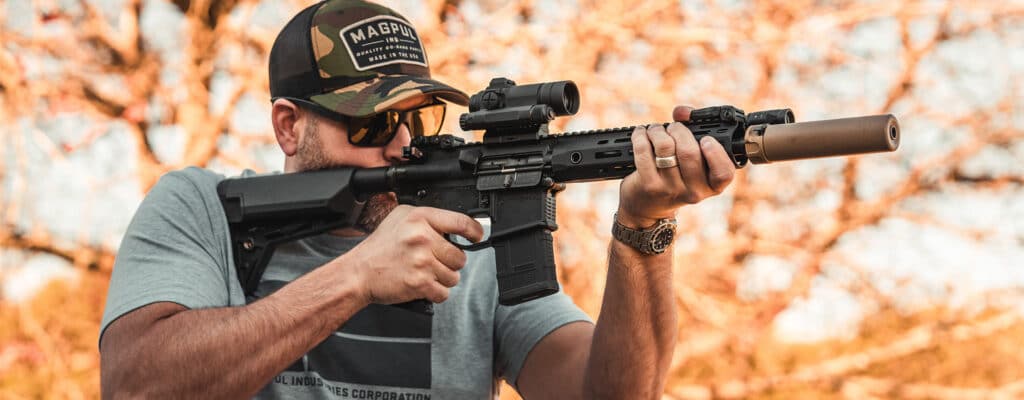
Suppressed .300 Blackout might be the perfect solution, but there are a couple of big issues. First of all, suppressors can be very, very expensive. Second, 5.56 is much cheaper per bullet, a big advantage if you plan to train extensively with your rifle. Training to proficiency makes a massive difference when things get serious, so that’s definitely a factor. Moreover, the very lack of raw power means 5.56 poses a smaller danger from overpenetration, though a regular FMJ load of either cartridge can blow through drywall with ease. If you plan to use your rifle for tasks other than home defense, 5.56 also offers superior accuracy at range (again, unless it’s fired through a very short barrel).
The ideal solution, whichever caliber you choose, is expanding or frangible ammo. Excellent self-defense loads for both calibers, that will reliably and dramatically expand on impact, now exist. This has the double advantage of diminishing overpenetration risk, while ensuring maximum force transfer to the target and maximum wound width.
A lot of ink is spilled on the advantages and disadvantages of these two calibers, but either easily packs the power and ballistic performance to be potentially fatal. The biggest deciding factor in the effectiveness of your shot will probably be shot placement. Hit the opponent somewhere important, and your chances of a quick win are much better, whatever cartridge or load you fire. So how can we optimize shot placement?
Weapon Lights
You can’t hit what you can’t see.
For that matter, you really don’t want to even try, not with legal and moral responsibility for every shot to consider.
The basic purpose of a rifle light is to enable you to get a good visual on the target in the dark, rapidly and with minimal hassle. That way, you can quickly focus on the target and achieve that all-important fast aiming, with no dangerous misses that start piercing walls, and no tragic target misidentifications. Often left unmentioned, this item is a must-have.
You could try relying on a handheld light, or your home light switches in a nighttime emergency. But a handheld light will take away one hand you need for aiming your gun. So will flipping a light switch, which might be on the other side of the room anyway when you need it here and now.
Buying a good weapon light is tricky, as many cheap foreign import models have bad reputations for overheating, losing luminosity over time, or other serious problems. On the other hand, reliable, basically bombproof military-grade lights may go over $300 in price.
In this market, one of the best deals you can get is the Streamlight ProTac series. Streamlight has an excellent reputation for reliability and resilience in the gun community, and these lights come waterproof, shockproof, and very bright. Even the cheaper 350 lumen model packs enough brightness that it can blind an opponent with darkness-adjusted pupils for several seconds. That’s right—get a good weapon light, and you’ll have the ability to cripple an assailant’s ability to react to you for a crucial moment, without even having to fire a shot (a great asset that might even save you legal trouble down the line). Even better, this light comes with a complete remote pressure switch included. Setting this up in a good spot will let you activate or deactivate the light much faster and more fluidly, optimizing your speed while making it easy to vanish into the darkness instantly.
Specs: Streamlight ProTac Rail Mount 1L – Dedicated Fixed Mount Dual Fuel Long Gun Light – Max 350 Lum
Lumens: 350
CR123A lithium battery output:
High: 350 lumens; 12,000 candela; 219m beam; runs 1.75 hours.
Low: 40 lumens; 1,380 candela; 19m beam; runs 14.5 hours.
AA alkaline/AA lithium battery output:
High: 150 lumens; 4,950 candela; 141m beam; runs 1.5 hours (alkaline); runs 4.5 hours (AA lithium)
Low: 40 lumens; 1,380 candela; 19m beam; runs 8 hours (alkaline); runs 14 hours (AA lithium)
There’s also Streamlight’s 1000 lumen ProTac HL-X, with all the same goodies plus higher brightness. On its maximum power setting, this little gizmo can send a beam of light out for over 300 meters, which is very impressive for the price point. If you are also interested in outdoor night fighting and can’t afford to mortgage your house and buy night vision, then a quick-on/off rifle light with that kind of range might be the next best thing.
Specs: Streamlight ProTac HL-X Rail Mount Light with Remote Switch – 1000 Lumen
Lumens: 1000
Max Candela: 27,600
Battery Life on High: 1.25 hours
Battery Life on Low: 23.0 hours
Beam Distance: 332 meters
Battery Type: CR123A lithium or 18650 lithium ion
Length: 5.43 inches (13.79 centimeters)
Weight: 6.40 ounces (181.44 grams) – 6.90 ounces (195.61 grams)
Red Dots—Best Optic for Home Defense
It’s well known that, for fast aiming in close quarters, nothing beats a trusty, basic red dot. Iron sights are good to have for backup, but really won’t provide the same speed. Moreover, being colored darkly, irons might be very difficult to use sometimes in dim conditio. When it comes to red dots for home defense, get one that’s reliable, and adjustable lower brightness levels for your dark-adapted pupils (it will also save power). The AT3 RD-50 is a great choice in this vein. A host of features, from nitrogen purging and waterproofing, to excellent shock-proofing and scratch-resistant lenses, make this a dependable, excellent bang-for-your buck option.
AT3 RD-50 Specs
Reticle Type: 2 MOA red dot
Body Material: 6061 Aluminum
Recoil Resistance: Certified to 500 g’s
Weight: 3.6 oz
Battery Type: CR2032
Battery Life: up to 50,000 hrs on lowest setting
Finish: Matte Black Anodized
Mounting: Picatinny/Weaver Rail
Lasers—Lightspeed Aiming
Of course, when it comes to fast, intuitive aiming solutions, you can’t forget about lasers. Besides, there’s nothing quite as awesome, or as intimidating, as being able to put a bright dot on the bad guy’s chest. A red laser, all else being equal, offer longer battery life, while a green laser will be more visible (even in daylight) and offer an edge in aiming speed.
If you’re looking for a relatively affordable laser sight to experiment with, try the UTG BullDot Compact green laser. The laser reaches out to 300 yards, and comes in a small, low-profile package good for keeping your rifle as ergonomic and handy as possible. The clever rounded shaping and tough aircraft-grade aluminum body ensure this little sight can take a beating. The relatively wide spill of the laser can be an advantage too, getting you on-target quickly at those critically close ranges.
UTG BullDot Compact green laser Specs
Laser Type: Class 3R, 2.0-4.5mW
Body Material: Aircraft Grade Aluminum
Weight: 4.35 oz with battery
Battery Type: CR2 LithiumX1
Battery Life: 390 min
Finish: Hardcoat
Laser Range: 300 yds
Beam Diameter: 8” at 50 yds
Mounting: Picatinny/Weaver Rail
But then, if lasers and red dots are the best close-quarters fast aiming tools, why not get both in one? That’s just what the AT3 LEOS Red dot with integrated laser offers, with both red and green laser options. The red laser variant offers an impressive 40 hours of continuous laser operation, while the red dot can last up to 50,000 hours. Again, this red dot is fully waterproofed, fogproofed, and protected in a 6061 aircraft-grade aluminum housing.
AT3 LEOS Red Dot with Integrated Laser Specs
Reticle Type: 2 MOA red dot
Body Material: 6061 Aircraft-Grade Aluminum
Recoil Resistance: Certified to 500 g’s
Red Laser Type: <5mW Class IIIa
Green Laser Type: 5mW Class IIIb
Weight: 8.3 oz
Battery Type: CR123
Red Dot Battery Life: up to 50,000 hrs on lowest setting
Laser Battery Life (red): 40 hrs
Laser Battery Life (green): 8 hrs
Finish: Matte Black Anodized
Mounting: Picatinny/Weaver Rail
Final Thoughts
For a task as important as home defense, it’s a good idea to put time and thought into a good gear setup from the start. Once you get that setup, however, you’ll need to practice with it to truly realize its potential. Should worse come to absolute worst, your best insurance against freezing up under panic is discipline and muscle memory, which comes from solid practice. Take your new home defense AR to the range and put her through her paces. Even better, take rifle training classes. Using your weapon will help you spot flaws and areas for improvement in your gun. Switch out anything you don’t like about your setup, for something more functional. We’re all a little different, and only experimenting with your AR will let ensure you’re ready for the worst. Best of luck!
One Last Tip
If there’s anyone that knows the AR-15 platform, it’s the US military. As a special offer for our readers, you can get the Official US Army Manual for AR-15/M4/M16 right now – for free. Click here to snag a copy.





